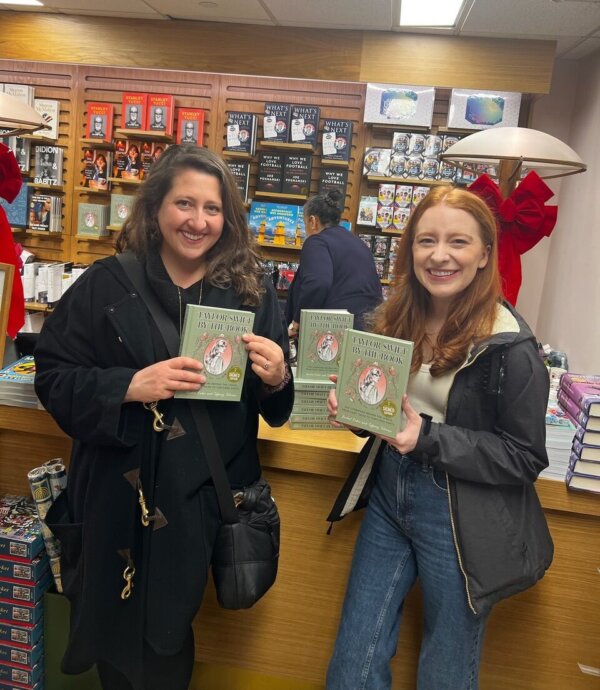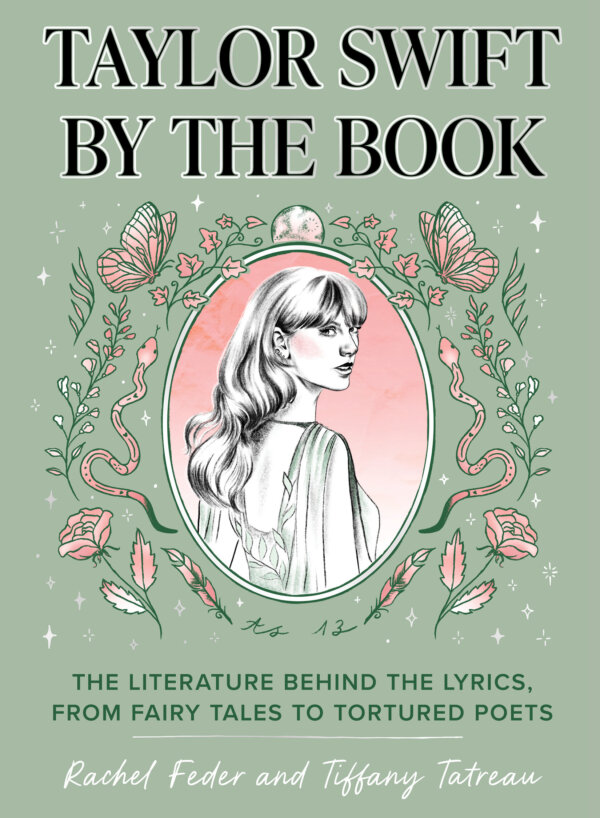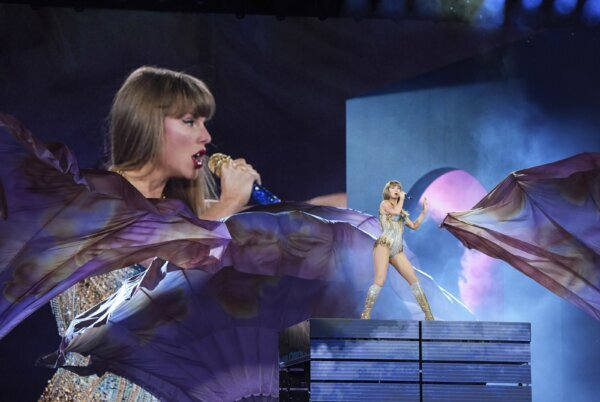This video is no longer available.
As one of the largest pop artists in the world, Taylor Swift’s music has permeated grocery stores, car rides and playlists.
The authors of a new book said Swift’s songs are more than just earworms — their lyrics can teach us about both literature and literary devices.
Over the course of her career, Swift has pulled inspiration from literary greats, such as Robert Frost and F. Scott Fitzgerald, as well as making reference to other historic stories.
“Taylor Swift by the Book: The Literature Behind the Lyrics, from Fairy Tales to Tortured Poets” was cowritten by English professor Rachel Feder and musical theater performer Tiffany Tatreau.
“We break the albums up into literary eras, so we connect them to topics like decadence and modernism … and the Gothic … and romanticism,” Feder told WTOP. “We just nerd out about all these things.”
The two women — who happen to be sisters-in-law — unpack Swift’s discography line by line and spell out allusions to classic works and use of rhetorical devices.
“Some of them are so subtle … that it was really fun to be the people to get to take that bookish magnifying glass and say, ‘Here’s one!'” Feder said.
What’s Swift referencing?
The book starts in her bildungsroman era with her debut, self-titled album from 2006. It ends with her postmodernist era and her album, “The Tortured Poets Department” (2024).

Early career references
Most people have probably picked up on how Swift played off Shakespeare’s “Romeo and Juliet” in her song “Love Story.” There, she rewrites the tragedy to have a new, happy ending.
“We get a fun kind of teenage optimism play on these star-crossed lovers,” Tatreau said.
Swift belts out the lines, “Romeo, take me somewhere we can be alone.”
“But we even see it earlier in the debut album,” Tatreau said, referring to the song “The Outside.”
“We have ‘I tried to take the road less traveled by’ as a Robert Frost reference … on a song that she wrote when she was 12, which is pretty, pretty awesome.”
Frost comes up in Swift’s writing throughout her career. In fact, Swift even references the same poem, “The Road Not Taken,” on her song “tis the damn season,”
“The road not taken looks real good now,” Swift sings as she references the poem’s themes of choices and regret.
‘It might just slip by’: Swift returns to these works over and over
“The Great Gatsby” by F. Scott Fitzgerald is among the classic works referenced in Swift’s music, beginning with her “1989” album, which was released in 2014 and is characterized by “lavish celebrations,” Tatreau said.
“We have the ‘will they, won’t they?’ love story, part of Gatsby that keeps coming back,” Tatreau said.
“This past love, this lantern across the sea, kind of referenced in ‘This Love’ on ‘1989’. And then we have a lot of car wrecks.”

As she grapples with letting go of a past relationship in the song “happiness” (2020), Swift writes about “a beautiful fool” and the “green light of forgiveness.”
“These really direct allusions to those famous symbols from Gatsby,” Feder said of the lyrics on the album “evermore.”
The character of Peter Pan, created by J.M. Barrie, is also sprinkled throughout her songs.
“We trace Peter Pan into songs that have to do with this sort of romantic conceit of Peter Pan,” Feder said. “The love interest who won’t grow up with you, or won’t grow up and come find you, or won’t come down to earth.”
At times, Peter Pan is also used in songs about loss or tragedy, Feder said.
Tatreau said those Peter mentions span Swift’s career and act as a lens into her changing view on aging.
On “Speak Now” (2010), in her song “Never Grow Up,” Swift writes about “growing up as a teenager and feeling that childhood ending.”
On her later album, “The Tortured Poets Department,” her view on growing older has changed. In the song “Peter” (2024), she sings about a romantic partner who refuses to grow up. In those lyrics, Swift references the Lost Boys and Wendy deciding to leave Peter behind:
“Forgive me, Peter, please know that I triedTo hold on (hold on) to the days (to the days)When you were mineBut the woman who sits by the window has turned out the light”
In the same song, she seems to callback to an earlier “Jane Eyre” allusion on the song “invisible string” (2020) on the album “Folklore” — a reference to a comment made in the novel by the character Edward Rochester, who uses the analogy of an invisible string to describe his connection with Jane.
“If you’re not looking for it, it might just slip by,” Tatreau said, adding that it’s her favorite reference.
“Cassandra,” another song on the album, is dedicated to the ill-fated fortune-telling figure in Greek mythology that appears in Homer’s works. In both Homer and Swift’s version, Cassandra “descended into madness” after not being heard, Tatreau said.
Swift’s place in ‘literary history’
“Part of the kind of alchemy, or the magic, from my perspective as someone coming at it from this literary lens in Taylor Swift’s songwriting, is that it does really create this community of listeners,” Feder said. “This community that is participating in the art.”

That’s a concept that Swift has in common with many of the artists she’s inspired by, including Mary Wollstonecraft, author of “A Vindication of the Rights of Woman.” Wollstonecraft was also mother of Mary Shelley, who would write the gothic novel “Frankenstein” a generation later.
“You look at Mary Wollstonecraft’s most radically feminist writing,” Feder said. “She’s not writing political theory. She’s trying to write gothic novels, because she’s trying to get it to the girlies. She’s trying to share it with a mass readership.”
Tatreau said Swift’s pop tunes are an accessible window into famous works and rhetorical devices.
“Shakespeare, which we can code as very intellectual and very high brow and very serious, was really art for the people,” Tatreau said, adding that Shakespeare “was really theater made for everyone to come see.”
In writing the book, Feder said she kept in mind that “literary history” is constantly developing.
“All of these different texts that we’re consuming in all of these different ways are valuable and are connected to literary tradition and are shaping the stories that we tell about our own lives.”
The authors hope the book puts Swift’s place in this “literary history” into context.
“Situating Taylor Swift’s lyrics, which are so important to so many people in the context of literary history, just to me felt like a really beautiful way to look at how they function in this tradition and help read them as literature, which they are,” Feder said.
And Tatreau said it just might change how readers interact with her discography.
“I hope that they get a new way to listen to music that they love,” Tatreau said. “I think that’s been the biggest gift for me … Once you kind of open your mind to these kinds of connections, you really start to enjoy things in a new depth.”
Get breaking news and daily headlines delivered to your email inbox by signing up here.
© 2024 WTOP. All Rights Reserved. This website is not intended for users located within the European Economic Area.







